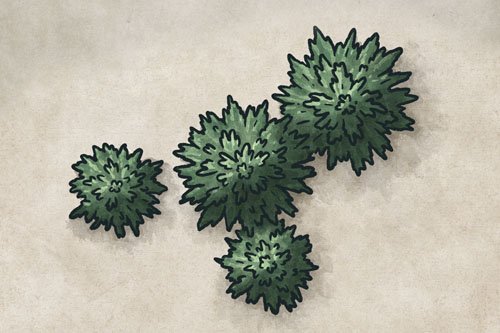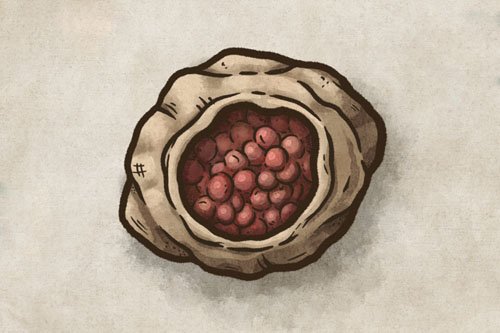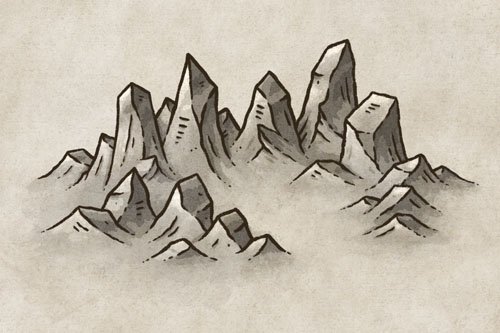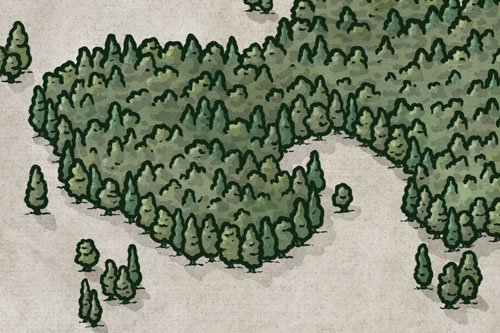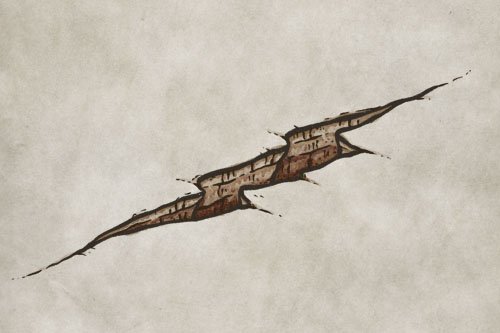Meandering Rivers - Why Rivers Curve in Flat Terrain?
Have you ever wondered why rivers meander all over the place, even on a flat landscape? If water likes to choose the path of least resistance, what’s the point of it curving back and forth so much? Understanding little things like this is important if you want to create a believable and immersive setting for your fantasy stories. Every setting is a mixture of familiar and strange, but without the grounding of realism, you may find your story falls flat. Before you start drawing the rivers on your map, here is a quick tip on why rivers like to meander and curve, so you understand how to draw them on your fantasy maps.
Shaped by Mountains
When a river flows through the mountains, it primarily chooses the path of least resistance and weaves and is directed by the shape of the terrain. This makes sense as most rock takes a long time to erode so the water is a bit more at the mercy of the topography.
So, why do rivers meander so much on flat terrain? You would think they would flow in a relatively straight path cutting through the landscape. And yet, you could argue they weave and meander more across a level landscape!
Directing the Flow
Water may begin flowing in a relatively straight line downhill, but even small obstructions along the bank will alter the path. It could be a stone, a fallen tree, or even just a weak point in the bank but all of these things will change the flow of the water.
In this example, you can see how the water encounters a boulder that is jutting into the river and is forced to the left and toward the opposite bank.
Erosion
Once the water in our example is directed toward the left, the river will begin to erode the bank and cause a curve to form. Once this happens, momentum will start to build through the curve and it will slingshot back toward the right. Not surprisingly, the right side of the bank will become eroded and the process will begin again.
Interesting Science Stuff
You may be wondering…is there a pattern? The answer is yes because on average the length of an S curve tends to be about six times the width of the channel. Like many things in nature, there is a fractal pattern built into the way rivers meander.
Soil Deposits Along the Banks
But, it’s not just the removal of sediment from the river bank that is causing the curved patterns, it’s also the deposition of that sediment along the way. As the water moves more slowly on the inside curves, soil, and debris are deposited. This further increases the curvature and the slingshot effect of the river.
If you look at the cross-section of one of these rivers, you’ll notice that the bank is significantly steeper on the outside curve when compared to the inside curve. Sediment builds up much more gradually on the inside curve where the water moves slowly and you end up with a more gradual dip in the terrain.
Does this mean rivers just keep getting larger and larger curves?
Not exactly
Oxbow Lakes
Eventually, those large curves in the river will begin to run into itself, and that’s where an interesting feature called an Oxbow Lake comes in. The curves become so extreme that they intersect, and then naturally the water will choose the path of least resistance rather than flowing around the curve. The large curve is then in a sense abandoned by the river, and you’re left with an interesting C-shaped lake!
So the next time you go to draw your river, make sure it doesn’t flow in too straight a line! Allow it to curve around and meander a bit, and maybe you’ll be inspired to throw an oxbow lake in there for good measure. I guarantee someone who appreciates realism in their fantasy maps will take notice and say something.
Happy Mapping!
- Josh








